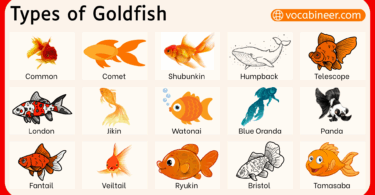Wild animals are those that live on their own in forests, deserts, and other places without people helping them. They use their skills to hunt, hide, or stay safe. Lions, wolves, zebras, and elephants are some animals that belong in the wild. You will learn 100 wild animals name with pictures so you can talk about nature, stories, or school topics easily.
In This Page
List of 100 Wild Animals Names from A to Z
Below is a list of 100 wild animals names from A to Z to help learners recognize and remember them easily.
- A – Antelope, Alligator, Anaconda, Armadillo
- B – Bear, Baboon, Bison, Bat
- C – Cheetah, Crocodile, Cougar, Chimpanzee
- D – Deer, Dolphin, Dingo, Duck
- E – Elephant, Eagle, Eel, Emu
- F – Fox, Frog, Falcon, Flying Squirrel
- G – Gorilla, Giraffe, Gazelle, Gecko
- H – Hippopotamus, Hyena, Hedgehog, Hornbill
- I – Impala, Iguana, Indian Cobra, Ibis
- J – Jaguar, Jackal, Jellyfish, Junco
- K – Kangaroo, Koala, Kiwi, King Cobra
- L – Lion, Leopard, Lynx, Lemur
- M – Monkey, Moose, Meerkat, Macaw
- N – Newt, Nightingale, Nilgai, Nighthawk
- O – Otter, Owl, Ocelot, Orangutan
- P – Panda, Panther, Porcupine, Parrot
- Q – Quail, Quokka, Quetzal, Queen Snake
- R – Rabbit, Raccoon, Rhinoceros, Reindeer
- S – Snake, Sloth, Squirrel, Seal
- T – Tiger, Tortoise, Tapir, Toucan
- U – Urial, Uakari, Umbrella Bird, Unicornfish
- V – Vulture, Viper, Vicuna, Vaquita
- W – Wolf, Walrus, Wombat, Wild Boar
- X – Xerus (African ground squirrel), Xantus’s Hummingbird, X-ray Tetra, Xenops
- Y – Yak, Yellow Mongoose, Yellowfin Tuna, Yabby
- Z – Zebra, Zebu, Zorilla, Zonkey
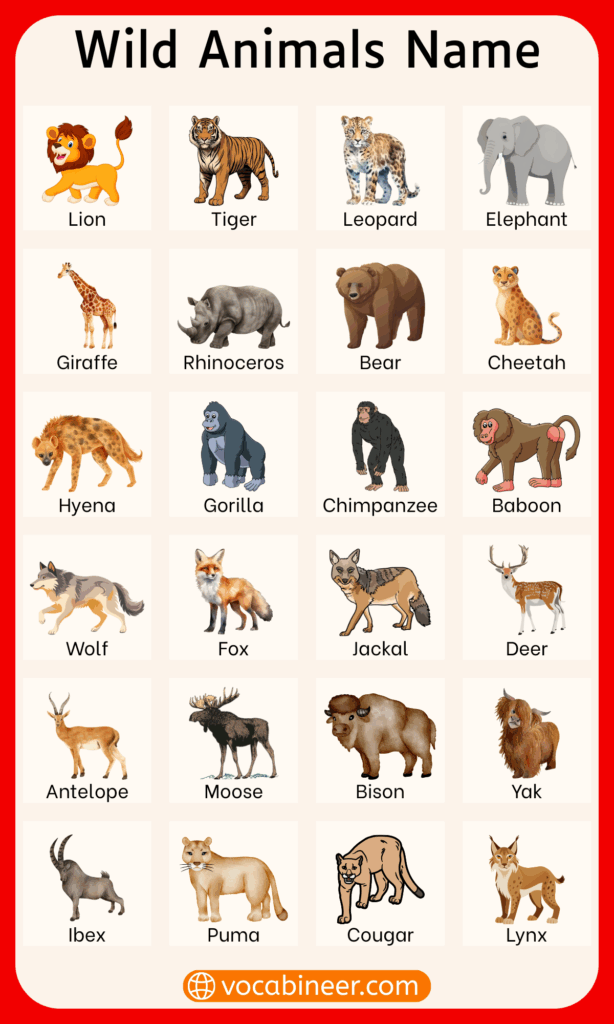
Names of Common of Wild Animals in English
Wild animals live freely in forests, mountains, deserts, and rivers, and they play an important role in nature. Knowing their names helps in learning about wildlife and talking about animals in English. Below is a list of common wild animals names that are often mentioned in studies, stories, and daily conversations.
- Lion
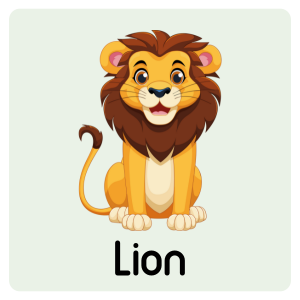
- Tiger
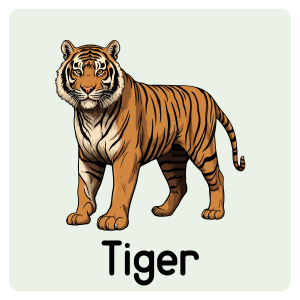
- Elephant
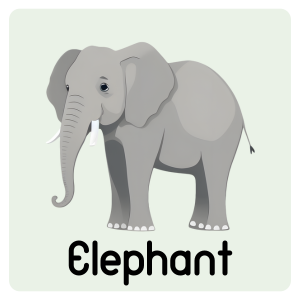
- Giraffe

- Zebra
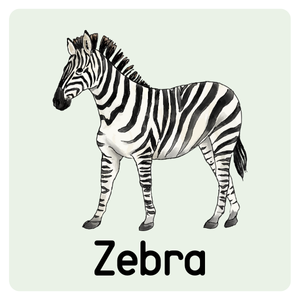
- Bear
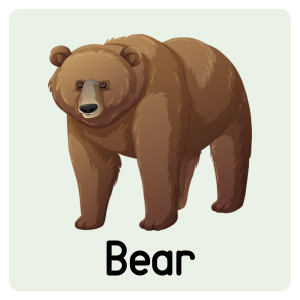
- Hyena
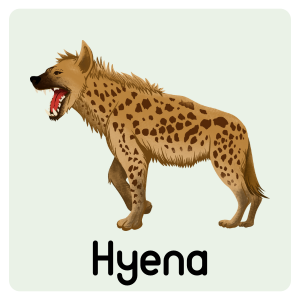
- Deer
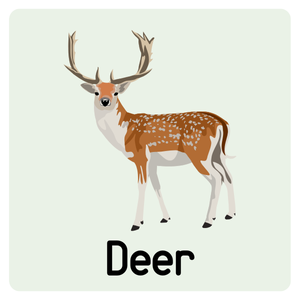
- Wolf
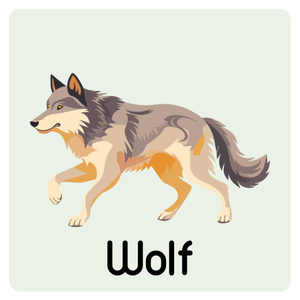
- Fox
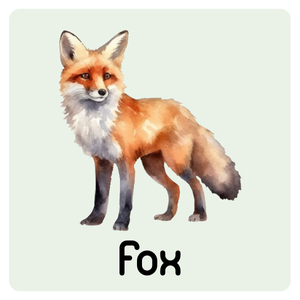
- Leopard
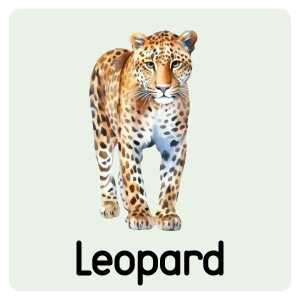
- Cheetah
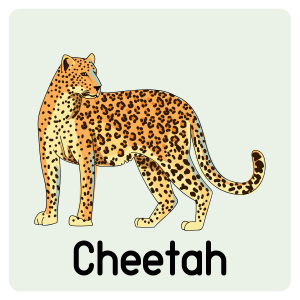
- Kangaroo

- Panda

- Rhinoceros

- Crocodile

- Wild Boar
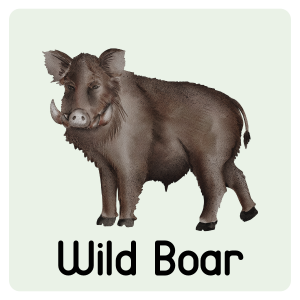
- Jackal
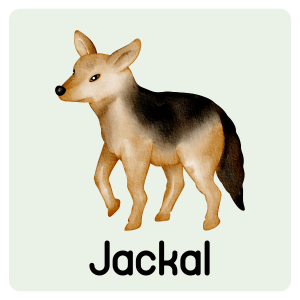
- Antelope
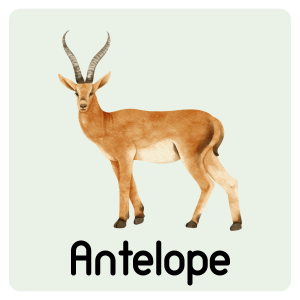
- Gorilla

Wild Animals Names with Their Habitats and Features
Wild animals live in different habitats based on their needs and adaptations. Here are common habitats and some animals found in each:
- Forests: Deer, tigers, gorillas live in dense trees with rich plant life.
- Savannas: Lions, elephants, and zebras roam the open grasslands.
- Mountains: Snow leopards, goats, and eagles live in cold, rocky areas.
- Deserts: Camels, dingoes, and foxes survive with limited water.
- Rainforests: Monkeys, jaguars, and parrots thrive in warm, wet forests.
- Arctic and Tundra: Polar bears, narwhals, and wolves adapt to cold, icy environments.
Categories of Wild Animals and Names with Pictures
Wild animals can be grouped by the environment they live in. Some live in forests, others in deserts or icy lands. This helps us understand their behavior, diet, and body features. Below is the categorized list of wild animals based on their natural habitats.
Forest Wild Animals
- Tiger: A large cat with orange fur and black stripes. It hunts alone and is strong and quiet.
- Deer: A gentle animal with long legs and antlers. It moves quickly and lives in forests and fields.
- Fox: A small predator with red fur and a bushy tail. It’s smart, quiet, and active at night.
- Leopard: A spotted wild cat that can climb trees and is very fast when chasing prey.
- Bear: A big, strong animal with thick fur. It lives in mountains and eats plants, fish, and meat.
- Gorilla: A large ape that walks on its knuckles. It lives in groups and is very protective.
- Monkey: A playful animal with a long tail. It climbs trees and often moves in noisy groups.
- Raccoon: A nocturnal mammal with black rings around its eyes. It uses its front paws like hands.
- Owl: A bird of prey that is active at night. It has sharp eyes and turns its head far around.
- Wild Boar: A wild pig with thick fur and strong tusks. It searches the forest for roots and insects.
- Bison: A huge animal with a large head and shoulder hump. It moves in herds and eats grass.
- Lynx: A medium wild cat with tufted ears and thick fur. It moves quietly through snow and woods.
- Porcupine: A slow-moving rodent with sharp quills for defense. It lives in trees or rocky places.
- Woodpecker: A small bird that pecks tree trunks to find bugs. It makes loud tapping sounds.
- Panther: A dark-colored big cat often used for leopards or jaguars. It hunts quietly and alone.
Savanna Wild Animals
- Lion: Lions are known for their loud roar and live in groups called prides. They’re powerful hunters with golden fur.
- Elephant: This massive animal uses its trunk to lift food, spray water, and greet other elephants with gentle touches.
- Giraffe: Long necks help giraffes reach leaves at the tops of trees. Their spotted patterns act as camouflage.
- Zebra: With bold black-and-white stripes, zebras often stay in herds to confuse predators and watch for danger together.
- Cheetah: Built for speed, the cheetah chases prey with powerful legs and balances using its long tail while sprinting.
- Hyena: Known for its laughing calls, the hyena scavenges meat but also hunts in groups using strong jaws.
- Antelope: Graceful and alert, these horned grazers dash across open land to escape lions and cheetahs in the wild.
- Warthog: These tough-skinned pigs feed on roots and kneel while eating, using tusks to protect themselves from threats.
- Ostrich: Fast-running and heavy, the ostrich is the largest bird and defends itself with strong legs instead of flying.
- Wildebeest: Often seen in mass migrations, this bulky grazer follows rain to find grass and water across the plains.
- Baboon: These loud monkeys travel in troops, using their long muzzles and sharp teeth for both eating and defense.
- Secretary Bird: Snake-hunting raptors with long legs and wild head feathers, they stomp prey with incredible accuracy.
- African Buffalo: With curled horns and a massive build, this animal stays close to its herd for strength and safety.
- Ground Pangolin: Covered in hard scales, pangolins roll into a ball when scared and dig for ants with sharp claws.
- Serval: Big-eared and quick, the serval leaps high to catch birds or small prey hiding in tall grass.
- Caracal: These reddish wild cats hunt alone, known for their ear tufts and incredible jumping skills during a chase.
- Impala: Speedy and agile, impalas use long horns to defend themselves and leap far when fleeing predators.
- Bushbaby: This tiny, wide-eyed jumper moves fast through trees at night, making loud squeaky calls to find others.
- Vervet Monkey: Alert and quick, these small primates climb trees and shout warnings when danger comes close.
- Kudu: Tall with twisted horns, kudus hide in the bush, staying still when they sense danger nearby.
Mountain Wild Animals
- Snow Leopard
- Mountain Goat
- Ibex
- Puma
- Yak
- Lynx
- Tahr
- Marmot
- Eagle
- Condor
- Chamois
- Red Panda
- Andean Bear
- Blue Sheep
- Himalayan Monal
- Markhor
- Cougar
- Llama
- Wolf
- Elk
Desert Wild Animals
- Camel: Camels store fat in their humps, not water, and can walk for days across hot desert landscapes without tiring.
- Fennec Fox: With huge ears that release heat, the fennec fox stays cool and hears insects moving underground.
- Meerkat: These small desert mammals live in burrows and work together to spot danger while others search for food.
- Scorpion: Known for its curved stinger, the scorpion hides under rocks during the day and hunts at night.
- Addax: This white desert antelope has long spiral horns and can go for long periods without drinking water.
- Sidewinder Snake: A unique snake that moves sideways to avoid the hot sand, leaving S-shaped tracks behind it.
- Gila Monster: This thick, slow-moving lizard has venom in its bite and stores fat in its tail to survive droughts.
- Jerboa: These tiny hopping rodents have long tails and back legs that help them escape predators in quick bursts.
- Kangaroo Rat: Able to survive without drinking, this rodent gets moisture from seeds and jumps like a tiny kangaroo.
- Desert Hedgehog: Covered in sharp spines, it rolls into a ball for protection and stays hidden in burrows by day.
- Horned Lizard: This spiky reptile can shoot blood from its eyes to scare predators and blends in with desert rocks.
- Dingo: A wild dog native to Australia’s deserts, it hunts alone or in packs and adapts easily to dry areas.
- Sand Cat: This small feline lives in deep deserts, with furry feet that help it walk quietly over hot sand.
- Monitor Lizard: A large predator with a forked tongue and strong tail. It searches for eggs, insects, and small animals.
- Ostrich: Fast runners with strong legs, ostriches use speed and kicking power to survive in wide open desert plains.
- Roadrunner: Known for its quick feet, the roadrunner is a desert bird that chases insects and even small snakes.
- Desert Tortoise: With a tough shell and slow pace, this reptile stores water and spends hot days in underground burrows.
- Arabian Oryx: This elegant antelope has long straight horns and can detect rain from far away to find fresh grazing.
- Coyote: A clever hunter that survives in deserts by eating anything from fruit to rodents and even insects.
- Vulture: These bald-headed birds circle high above deserts, using their sharp eyes to spot dead animals far below.
Rainforest Wild Animals
- Jaguar
- Sloth
- Toucan
- Poison Dart Frog
- Orangutan
- Macaw
- Tapir
- Capybara
- Anaconda
- Tree Frog
- Howler Monkey
- Chimpanzee
- Leafcutter Ant
- Okapi
- Armadillo
- Harpy Eagle
- Coati
- Kinkajou
- Agouti
- Green Iguana
Arctic and Tundra Wild Animals
- Polar Bear: The powerful predator of the Arctic, it hunts seals on ice using its sharp claws and strong swimming skills.
- Arctic Fox: This small hunter has thick fur and white winter coats that help it blend into the snow perfectly.
- Walrus: Large marine mammals with long tusks and whiskers, they rest on ice and dive deep to feed on shellfish.
- Snowy Owl: A bright white owl that hunts during the day. It watches silently from snowy hills for lemmings and mice.
- Caribou: These hoofed animals migrate long distances in herds, using wide hooves to walk on soft snow and muddy ground.
- Arctic Hare: With short ears and strong legs, this furry rabbit runs fast to escape predators in the frozen tundra.
- Musk Ox: Covered in thick fur, musk oxen form tight circles to protect calves from wolves during harsh winters.
- Lemming: These tiny rodents dig tunnels under snow and breed quickly, becoming a key food source for Arctic predators.
- Narwhal: Often called the unicorn of the sea, this Arctic whale has a long spiral tusk and travels in pods.
- Beluga Whale: A white whale known for its high-pitched sounds. It lives in icy waters and communicates using whistles and clicks.
- Puffin: This colorful-beaked bird dives underwater to catch fish and nests in rocky cliffs near cold coastal waters.
- Reindeer: Another name for caribou in some regions. These animals have antlers and are built for snowy travel.
- Arctic Wolf: Strong and fast, this northern wolf hunts in packs and survives in icy lands with thick white fur.
- Seal: Smooth-bodied swimmers that rest on ice and dive deep to catch fish, using their flippers to glide underwater.
- Wolverine: A tough carnivore with sharp teeth and claws. It scavenges and hunts alone, even in freezing conditions.
- Ptarmigan: This ground bird changes color with the seasons, brown in summer and white during snowy months.
- Ermine: A sleek weasel with a white winter coat and black tail tip, it hunts small prey in tunnels and snow.
- Snow Goose: These loud, white birds migrate in flocks, feeding on grasses and plants along frozen coastlines.
- Ivory Gull: A pure white Arctic bird that follows polar bears to feed on leftover seal meat and scraps.
- Greenland Shark: This slow-moving Arctic shark lives deep below the ice and can survive for hundreds of years.
Why Is It Important to Learn Wild Animals Name in English?
Learning wild animal names improves vocabulary and helps people communicate clearly about animals. It supports education in science and raises awareness about wildlife protection. Knowing these names is useful in travel, documentaries, and wildlife studies. For children, it builds curiosity and respect for nature, enriching language skills and understanding of the natural world.
FAQs About Wild Animals
Some common wild animals are lion, tiger, elephant, bear, wolf, fox, giraffe, zebra, deer, and monkey.
The lion is known as the king of the jungle because of its strength and leadership in the wild.
Many experts consider the chimpanzee and dolphin among the smartest wild animals due to their problem-solving skills and social behavior.
You can learn pronunciation by listening to audio guides, using online dictionaries, or repeating after native speakers. For example, lion is pronounced /ˈlaɪ.ən/ and elephant is /ˈɛlɪfənt/.
Unique wild animals include the platypus, axolotl, okapi, narwhal, and fossa—animals not commonly seen and with special traits.
Wild animals live in various habitats like forests, savannas, deserts, mountains, rainforests, and arctic regions depending on their species.
Wild animals live in nature and survive on their own, while domestic animals live with humans and depend on them for care and food.
Read More



